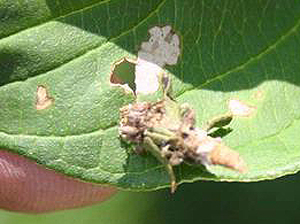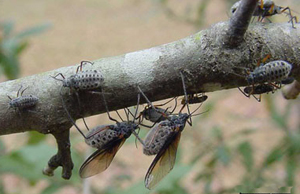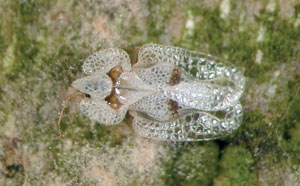Leaf Feeders

William Fountain, University of Kentucky, Bugwood.org
Sap Feeders

Herbert A. 'Joe' Pase III, Texas A&M Forest Service, Bugwood.org

Maja Jurc, University of Ljubljana, Bugwood.org
These lace bugs spend the winter as eggs under bark or in leaf litter. The eggs hatch in early spring and the nymphs begin to feed on plant sap. There are several generations each season. Initially, numbers are so small that feeding symptoms are not noticed until the population peaks in late summer. When abundant, feeding can make plants unsightly and may cause premature leaf drop.
Lace bugs that fall from the trees and land on people will cause a biting sensation as they attempt to probe the skin with their piercing-sucking mouthparts. This can be a temporary nuisance in parks and playgrounds.